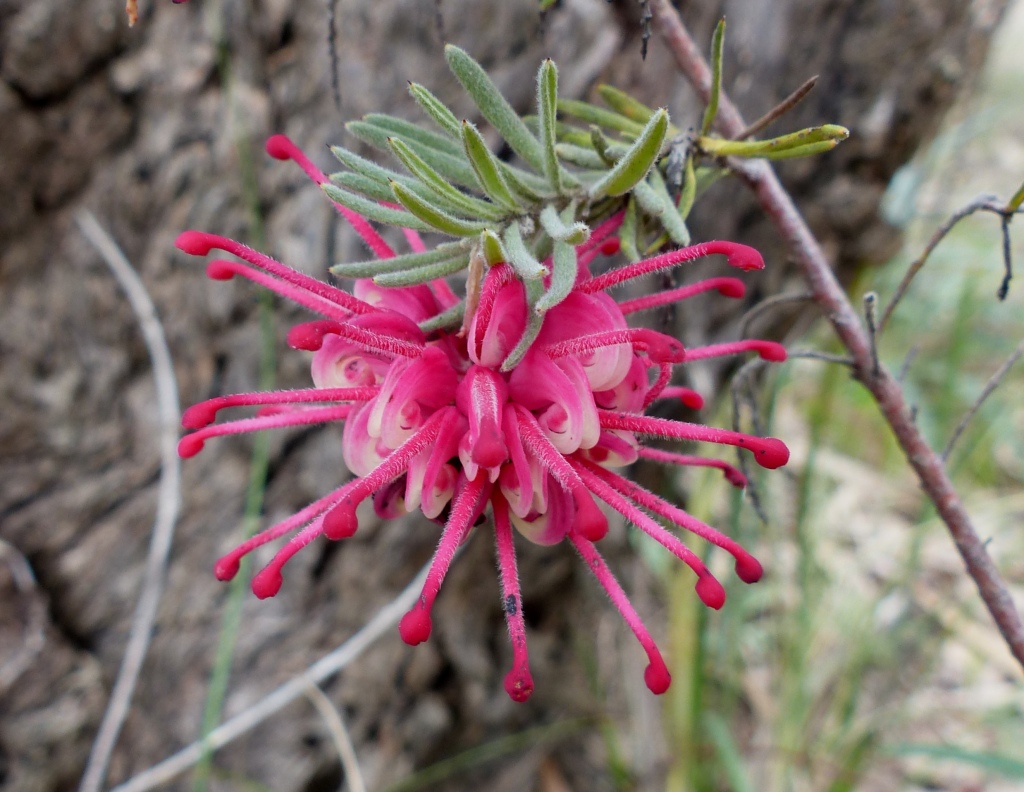Grevillea lanigera
A.Cunn. ex R.Br.Spreading shrub 0.2–0.5 m high, or a dense rounded shrub to 2 m high, sometimes root-suckering. Leaves entire, narrowly oblong-elliptic or narrowly obovate, 0.5–4 cm long, 1–5 mm wide; lower surface villous, often concealed; margin revolute or occasionally recurved. Conflorescences terminal and/or subterminal-axillary, decurved or erect, usually subsecund, usually simple, 1.5–3 cm long; ultimate rachises 2.5–10 mm long, almost glabrous; perianth cream, or pink to red at base and cream above, ventrally dilated at the base, outside glabrous, inside bearded; pistil 13.5–19.5 mm long, ovary subsessile, villous, style pink to red, villous except at apex, pollen presenter lateral. Fruits faintly longitudinally ridged, loosely villous. Flowers mainly late winter to early summer, but may flower at any time of year.
Wim, VVP, VRiv, GipP, OtP, Gold, CVU, GGr, NIS, EGL, EGU, WPro, HSF, HNF, MonT, VAlp. Also NSW. Grows usually in moist rocky places, sometimes in riparian associations, east and north from Wilsons Promontory.
Variable in habit, leaf colour, leaf margin recurvature, and floriferousness. Forms can be identified on these features and correlate with geography. Some forms grow very close to the sea and appear to be tolerant of salt spray.
Apparent morphological intergrades with Grevillea rosmarinifolia are not uncommon in eastern Victoria and, puzzlingly, in central Victoria well west of the known distribution of G. lanigera (e.g. Geelong and western Melbourne area). They are characterized by intermediacy of stylar indumentum and nectary prominence. McGillivray (1993) recorded low pollen viability counts for some of them; they may represent relictual hybrids from a formerly more widespread G. lanigera. Willis (1973, p. 46) refers to some of these intermediates as variants of G. lanigera.
Also recorded as hybridizing with Grevillea polybractea at Granya Gap, and with G. jephcottii in Burrowa-Pine Mountain National Park.
Makinson, R.O. (1996). Grevillea. In: Walsh, N.G.; Entwisle, T.J., Flora of Victoria Vol. 3, Dicotyledons Winteraceae to Myrtaceae, pp. 845–870. Inkata Press, Melbourne.
 Spinning
Spinning

